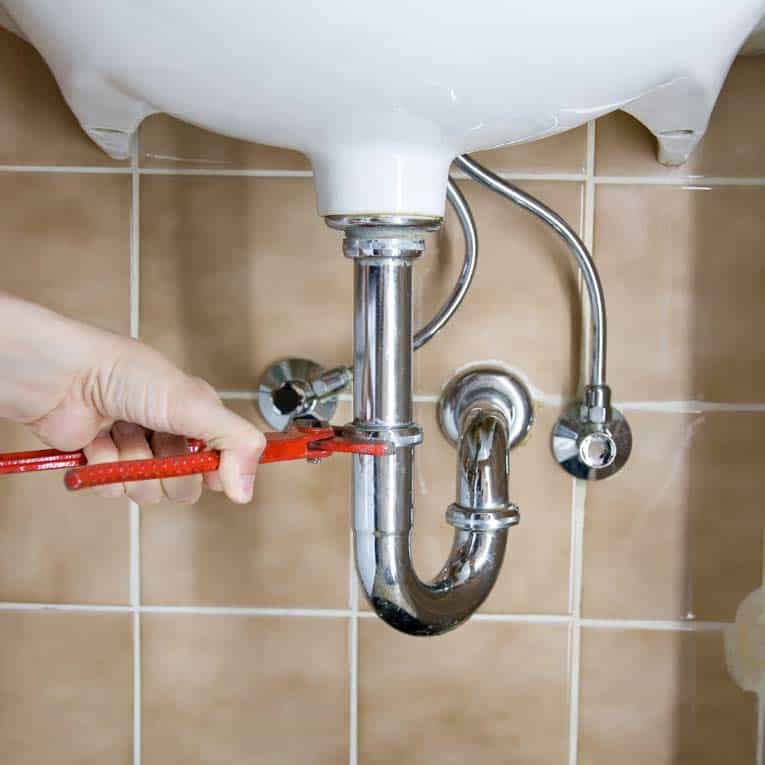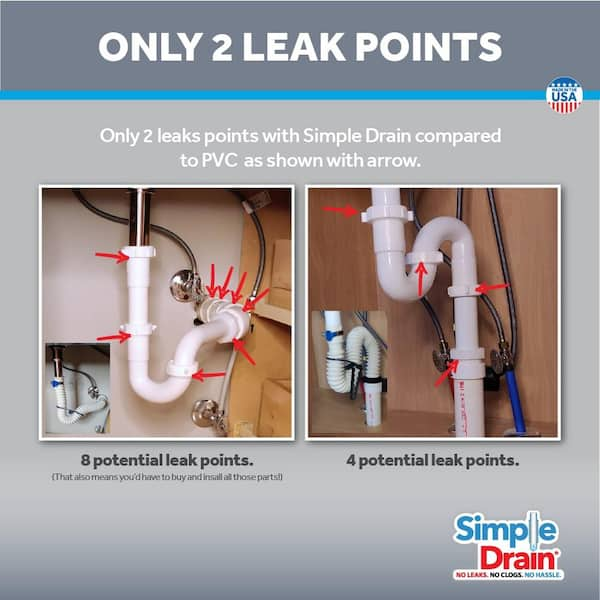The connection of the bathroom sink drain pipe is a crucial aspect of the plumbing system, ensuring the proper function of the sink and preventing leaks. The drain pipe connects the sink to the main drainage system, carrying wastewater away from the basin. Understanding the components and the proper procedure for connecting the bathroom sink drain pipe is essential for homeowners tackling plumbing projects or making repairs.
The key components of a bathroom sink drain pipe connection include the tailpiece, P-trap, and waste arm. The tailpiece is the vertical section that extends down from the sink drain. The P-trap, which is a U-shaped pipe, holds water to prevent sewer gases from entering the bathroom. The waste arm connects the P-trap to the drainpipe in the wall. These components work together to create a secure and effective drainage system for the sink.
The process of connecting the bathroom sink drain pipe begins with assembling the components in the correct order. The tailpiece is attached to the sink drain, extending down to meet the P-trap. The P-trap is then connected to the waste arm, creating a U-shaped bend. This U-bend retains a small amount of water, creating a barrier against sewer gases. Finally, the waste arm connects to the drainpipe in the wall, completing the connection to the main drainage system.
It’s essential to ensure proper alignment and secure connections when assembling the sink drain pipe. Hand-tighten the connections initially and then use channel-lock pliers to tighten them further, taking care not to overtighten and risk damaging the threads. A well-sealed and secure connection prevents leaks and ensures the efficient drainage of wastewater.
Regular maintenance of the bathroom sink drain pipe is crucial to prevent clogs and maintain the integrity of the plumbing system. Periodically check for any signs of leaks, corrosion, or loose connections. If there are issues with slow drainage or unpleasant odors, it may indicate a clog in the drain pipe or P-trap, which can be addressed by removing and cleaning these components.
The proper connection of the bathroom sink drain pipe is a vital aspect of plumbing that ensures efficient drainage and prevents issues such as leaks or sewer gas infiltration. Understanding the components involved, their assembly order, and the importance of regular maintenance empowers homeowners to address plumbing issues or undertake DIY projects with confidence. A well-connected and properly maintained sink drain pipe contributes to the functionality and longevity of the bathroom plumbing system.
SIMPLE DRAIN 1.25 in. Rubber Threaded P-Trap Bathroom Single Sink
How to Plumb a Drain – Sink Drain Pipes
Bathroom Sink Drain Leaking Around Threads – Premier Plumbing Inc
P-Trap Installation Drain Doesnu2019t Line Up Bathroom Sink Pipe
Bathroom Sink Drain Pipe – MAGZHOUSE
How To Plumb a Bathroom (with multiple plumbing diagrams
Simple Tips To Help You Deal With Bathroom Plumbing Issues
How to Install a Bathroom P-Trap
How to Install a Bathroom Sink Drain : 4 Steps (with Pictures
Everbilt 1-1/4 in. White Plastic Sink Drain P-Trap with Reversible
Related articles:
- Bathroom Sink Cabinets Modern
- Rustic Bathroom Sink Ideas
- Bathroom Sink Storage Ideas
- Farmhouse Bathroom Sink Ideas
- Bathroom Sinks Blue
- Bathroom Sink 400mm
- Ada Bathroom Sink Dimensions
- Bathroom Sink Marble Countertop
- Bathroom Sink Design Ideas
- Bathroom Sink Pipe Leak Repair
Bathroom Sink Drain Pipe Connection
Installing a bathroom sink drain pipe is an important part of any bathroom remodel. In order to ensure a smooth and efficient installation, it’s important to first understand the basics of how a drain pipe connection works. This comprehensive guide will provide you with all the information you need to get started connecting your new sink drain.
What You’ll Need for the Installation
Before beginning the installation process, make sure that you have all the necessary components for the job. These include: a sink drain, a tailpiece, a P-trap, and a connection nut. Additionally, you’ll need pliers, adjustable wrenches, and pipe sealant or Teflon tape.
Connecting the Tailpiece
The first step in connecting your new sink drain is to attach the tailpiece. Begin by unscrewing the existing drain pipe from its connection point. Once removed, use pliers or an adjustable wrench to loosen the connection nut. Carefully slide the tailpiece into place and then secure it using the connection nut. Hand-tighten it until it is firmly attached and then finish tightening it with a wrench.
Attaching the P-Trap
Next, you will need to attach the P-trap to the tailpiece. Begin by attaching one end of the P-trap to the tailpiece with a connection nut. Use an adjustable wrench or pliers to tighten it until it is secure. Then, attach the other end of the P-trap to the drainpipe using another connection nut and adjust accordingly with a wrench or pliers. Make sure that both connections are securely tightened before proceeding with installation.
Connecting the Drain Pipe
Once both ends of the P-trap have been connected, you can begin attaching your new sink drain pipe to them. Start by attaching one end of the drainpipe to one end of the P-trap using a connection nut and secure it with an adjustable wrench or pliers. Then, connect the other end of your drainpipe to its corresponding point on your bathroom sink using another connection nut and tighten accordingly with pliers or an adjustable wrench.
What type of materials should I use for my bathroom sink drain pipe?
Most bathroom sink drains are constructed using PVC piping due to its durability and affordability. However, if your bathroom has brass fixtures or if you’d prefer a more luxurious look, copper pipes can also be used for your drainpipes as well.
Do I need any special tools for this job?
To properly install your bathroom sink drain pipe, you will need some basic tools such as pliers, adjustable wrenches, and if needed pipe sealant or Teflon tape. Having these tools on hand before beginning installation will make things much easier in terms of getting everything connected correctly and securely in place.
How long does this process typically take?
The entire installation process should take around two hours depending on how experienced you are in plumbing tasks and how efficiently everything goes according to plan. Make sure that you have all the necessary components on hand before beginning so that you don’t waste time tracking them down during installation.
What type of plumbing is used to connect a bathroom sink drain?
The most common type of plumbing used to connect a bathroom sink drain is PVC pipe. This is due to its affordability, durability, and ease of installation. Additionally, it is also resistant to corrosion and doesn’t require special tools for installation.
What type of drain pipe is used to connect a bathroom sink?
PVC drain pipe is typically used to connect a bathroom sink. This type of pipe is affordable, durable, and resistant to corrosion. It also does not require special tools for installation and is easy to connect to the sink drain and P-trap.
What type of plumbing is used to connect a bathroom sink?
The most common type of plumbing used to connect a bathroom sink is called P-trap plumbing. This type of plumbing consists of two pipes that form a “P” shape, with one pipe leading from the sink drain and the other leading to the wall drain. The “P” shape traps any water that flows down the sink drain, preventing it from flowing back up into the home and causing foul odors.
What type of fittings are used to connect a bathroom sink?
Common types of fittings used to connect a bathroom sink include compression fittings, soldered fittings, push-fit fittings, and threaded fittings. Compression fittings are the most commonly used and require a nut to secure them in place. Soldered fittings are more permanent and require soldering. Push-fit fittings are designed to be easy to install, while threaded fittings require a wrench or pliers to secure them in place.
What types of plumbing fittings are used to connect a bathroom sink?
Plumbing fittings used to connect a bathroom sink typically include a tailpiece, drain trap, flange, P-trap, and slip nuts.











